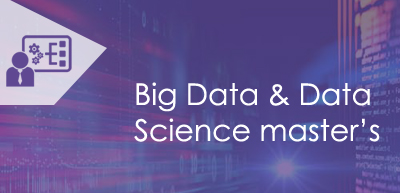<
AWS Training in Atlanta for Solutions Architect Certification
Flexible Schedule
32 Hrs Project Work & Exercises
36 Hrs Instructor Led online Training
40 Hrs Self-paced Videos
24X7 Support
Certification and Job Assistance
Enquire Now
Overview
- AWS platform for cloud solutions
- Deploying AWS for data ingress and egress
- The right use cases of the AWS architecture
- Evaluating the right AWS solution based on computation and database needs
- The lift and shift mechanism in AWS
- Interacting with AWS through SDK, CLI and API
- Building elastic, scalable and secure cloud solutions.
- Solution Architects or Programmers looking to build SaaS, PaaS and IaaS applications or migrate data to AWS from existing data centers
- System and Network Administrators
- Graduates and professionals looking to upgrade their skills in the cloud computing domain.
- AWS has over 1 million customers from 190 countries – Amazon
- AWS is as big as its next four competitors combined – Business Insider
- An AWS Certified Solutions Architect can earn $125,000 – Indeed
Today, cloud computing is no longer optional but critical to the success of any of the biggest enterprises on earth. Hence, getting AWS training and certification means that you can open the doors to virtually unlimited job opportunities that are offering highly competitive salaries. ZebLearn AWS course is completely oriented toward practical applications, and hence it gives you a clear advantage.
What you will gain?
- 1 to 1 Live Online Training
- Dedicated 24 x 7 Support
- Flexible Class Timing
- Training Completion Certification
- Direct Access to the Trainer
- Lifetime Access of an LMS
- Real-time Projects
- Dedicated Placement Support
Fees
Self Paced Training
13,052
Online Live One to One Training
22,740
Course Content
- 1.1 What is Cloud Computing
- 1.2 Cloud Service & Deployment Models
- 1.3 How AWS is the leader in the cloud domain
- 1.4 Various cloud computing products offered by AWS
- 1.5 Introduction to AWS S3, EC2, VPC, EBS, ELB, AMI
- 1.6 AWS architecture and the AWS Management Console, virtualization in AWS (Xen hypervisor)
- 1.7 What is auto-scaling
- 1.8 AWS EC2 best practices and cost involved.
Hands-on Exercise – Setting up of AWS account, how to launch an EC2 instance, the process of hosting a website and launching a Linux Virtual Machine using an AWS EC2 instance.
- 2.1 Introduction to EC2
- 2.2 Regions & Availability Zones(AZs)
- 2.3 Pre-EC2, EC2 instance types
- 2.4 Comparing Public IP and Elastic IP
- 2.5 Demonstrating how to launch an AWS EC2 instance
- 2.6 Introduction to AMIs, Creating and Copying an AMI
- 2.7 Introduction to EBS
- 2.8 EBS volume types
- 2.9 EBS Snapshots
- 2.10 Introduction to EFS
- 2.11 Instance tenancy- Reserved and Spot instances
- 2.12 Pricing and Design Patterns.
Hands-on Exercise –
- Launching an EC2 instance
- Creating an AMI of the launched instance
- Copying the AMI to another region
- Creating an EBS volume
- Attaching the EBS volume with an instance
- Taking backup of an EBS volume
- Creating an EFS volume and mounting the EFS volume to two instances.
- 3.1 Introduction to Elastic Load Balancer
- 3.2 Types of ELB – Classic, Network and Application
- 3.3 Load balancer architecture
- 3.4 Cross-zone load balancing
- 3.5 Introduction to Auto Scaling, vertical and horizontal scaling, the lifecycle of Auto Scaling
- 3.6 Components of Auto Scaling, scaling options and policy, instance termination
- 3.7 Using load balancer with Auto Scaling
- 3.8 Pre-Route 53 – how DNS works
- 3.9 Routing policy, Route 53 terminologies, Pricing.
Hands-on Exercise –
- Creating a Classic ELB
- Creating an Application ELB
- Creating an auto-scaling group
- Configuring an auto-scaling group
- Integrating ELB with Auto Scaling
- Redirect traffic from domain name to ELB using Route 53.
- 4.1 What is Amazon VPC,
- 4.2 VPC as a networking layer for EC2,
- 4.3 IP address and CIDR notations,
- 4.4 Components of VPC – network interfaces, route tables, internet gateway, NAT,
- 4.5 Security in VPC – security groups and NACL, types of VPC, what is a subnet, VPC peering with scenarios, VPC endpoints, VPC pricing and design patterns.
Hands-on Exercise –
- Creating a VPC and subnets,
- 2. Creating a 3 Tier architecture with security groups,
- 3. NACL, Internet gateway and NAT gateway,
- 4. Creating a complete VPC architecture.
- 5.1 Introduction to AWS storage
- 5.2 Pre-S3 – online cloud storage
- 5.3 API, S3 consistency models
- 5.4 Storage hierarchy, buckets in S3
- 5.5 Objects in S3, metadata and storage classes, object versioning, object lifecycle management, cross-region replication, data encryption, connecting using VPC endpoint, S3 pricing.
Hands-on Exercise –
- Creating an S3 bucket
- Uploading objects to the S3 bucket
- Enabling object versioning in the S3 bucket
- Setting up lifecycle management for only a few objects
- Setting up lifecycle management for all objects with the same tag
- Static website hosting using S3.
- 6.1 What is a database, types of databases, databases on AWS
- 6.2 Introduction to Amazon RDS
- 6.3 Multi-AZ deployments, features of RDS
- 6.4 Read replicas in RDS, reserved DB instances
- 6.5 RDS pricing and design patterns
- 6.6 Introduction to Amazon Aurora, benefits of Aurora, Aurora pricing and design patterns
- 6.7 Introduction to DynamoDB, components of DynamoDB, DynamoDB pricing and design patterns
- 6.8 What is Amazon Redshift, advantages of Redshift
- 6.9 What is ElastiCache, why ElastiCache.
Hands-on Exercise –
- Launching a MySQL RDS instance
- Modifying an RDS instance
- Connecting to the DB instance from your machine
- Creating a multi-az deployment
- Create an Aurora DB cluster
- Creating an Aurora replica
- Creating a DynamoDB table.
- 7.1 Introduction to CloudFormation
- 7.2 CloudFormation components
- 7.3 CloudFormation templates
- 7.4 The concept of Infrastructure-as-a-code
- 7.5 Functions and pseudo parameters
- 7.6 Introduction to Simple Notification Service, how does SNS work
- 7.7 Introduction to Simple Email Service, how does SES work
- 7.8 Introduction to Simple Queue Service, how does SQS work.
Hands-on Exercise –
- Creating a CloudFormation stack
- Launching a t2.micro
- EC2 instance using CloudFormation
- Using CloudFormation to automate an architectural deployment
- Creating an SNS topic, creating a subscription within the topic
- Setting up SES and sending a mail
- Creating an SQS queue and sending a sample message.
- 8.1 Pre-IAM, why access management
- 8.2 Amazon Resource Name (ARN), IAM features
- 8.3 Multi-factor authentication (MFA) in IAM, JSON
- 8.4 IAM policies, IAM permissions, IAM roles, identity federation, pricing
- 8.5 Introduction to CloudWatch, metrics and namespaces, CloudWatch architecture, dashboards in CW, CloudWatch alarms, CloudWatch logs, pricing and design patterns
- 8.6 Introduction to CloudTrail, tracking API usage.
Hands-on Exercise –
- Creating IAM users and a group
- creating an IAM policy and attach it to the group
- creating an IAM role
- Setup MFA for a user
- Creating a CloudWatch dashboard and add metrics
- Create a CloudWatch alarm which triggers according to CPU Utilization of an EC2 instance
- Creating a billing alarm
- Creating a log group
- Creating a trail.
- 9.1 What is AWS Lambda
- 9.2 How Lambda is different from EC2
- 9.3 Benefits and limitations of Lambda
- 9.4 How does Lambda work
- 9.5 Use cases of Lambda, Lambda concepts
- 9.6 Integration S3 with Lambda
- 9.7 What is Elastic Beanstalk, how does Beanstalk work, Beanstalk concepts, Beanstalk pricing
- 9.8 What is configuration management
- 9.9 What is AWS OpsWorks, AWS OpsWorks benefits
- 9.10 CloudFormation vs OpsWorks, services in OpsWorks, AWS OpsWorks Stacks, OpsWorks pricing.
Hands-on Exercise –
- Creating a Lambda function
- Setting up Lambda triggers and destinations
- Creating an Elastic Beanstalk application
- Uploading a new version of the application to Beanstalk
- Creating a stack in OpsWorks
- Launching the instance using OpsWorks and automatically installing the application.
- 10.1 What is FSx
- 10.2 Types of FSx,FSx for Windows server
- 10.3 How does FSx for Windows File Server work, FSx for Lustre
- 10.4 Use cases of FSx
- 10.5 Automatic failover process
- 10.6 Supported clients and access methods
- 10.7 What is a Global Accelerator, How Global Accelerator works, Listeners and Endpoints
- 10.8 What are AWS Organizations, Features of AWS Organizations, Managing multiple accounts
- 10.9 What are ENIs, ENAs and EFAs, Working with network interfaces
- 10.10 Enhanced Networking with ENA, EFA with MPI, Monitoring an EFA
Hands-on Exercise:
- Creating a shared FSx file system between two windows instances
- Accessing one instance with multiple Elastic IPS using ENI
- Using Global Accelerator to map instances from 2 regions into one domain name
- Enabling Enhanced Networking on an Ubuntu instance
- 11.1 Important guidelines for creating a well-architected AWS framework that is resilient and performant
- 11.2 Designing of fault-tolerant and high-availability architecture
- 11.3 Resilient storage
- 11.4 Decoupling mechanism
- 11.5 Multi-tier architecture solution
- 11.6 Disaster recovery solution
- 11.7 Scalable and elastic solutions.
- 12.1 What is DevOps,
- 12.2 Introduction to AWS DevOps,
- 12.3 AWS Developer tools – CodeCommit, CodeBuild, CodeDeploy and CodePipeline, integrating GitHub with CodePipeline,
- 12.4 Creating a DevOps lifecycle using AWS DevOps tools.
- 13.1 What is Cloud migration
- 13.2 Why migration is important
- 13.3 Migration process in AWS, the 6 R’s migration strategy
- 13.4 Virtual machine migration, migrating a local vm onto the AWS cloud
- 13.5 Migrating databases using Database Migration Service (DMS)
- 13.6 Migrating a local database to RDS
- 13.7 Migrating an on-premises database server to RDS using DMS, other migration services.
- 14.1 Guidance for clearing the exam, most probable interview questions and other helpful tips for clearing the exam and interview.
Benefits of Online Training
- 100% Satisfaction Ratio
- Dedicated Help In Global Examination
- Updated Syllabus & On-Demand Doubt Session
- Special Group & Corporate Discounts

FAQ’s
You will be working on real-time AWS projects and step-by-step assignments that have high relevance in the corporate world, and the curriculum is designed by industry experts. Upon the completion of the training course, you can apply for some of the best jobs in top MNCs around the world at top salaries. ZebLearn offers lifetime access to videos, course materials, 24/7 support and course material upgrading to the latest version at no extra fee. Hence, it is clearly a one-time investment.
You would be glad to know that you can contact ZebLearn support even after the completion of the training. We also do not put a limit on the number of tickets you can raise for query resolution and doubt clearance.
You will work on highly exciting projects in the domains of high technology, ecommerce, marketing, sales, networking, banking, insurance, etc. After completing the projects successfully, your skills will be equal to 6 months of rigorous industry experience.
Job Opportunities
AWS is a good career option for a fresher. In cloud computing, AWS has been on top for almost 6 years now and they are not going to loose their market soon so, AWS is a good option. You have a good point.
In the first quarter of 2020, AWS revenues grew by 33% compared to Q4 2019. This shows the continued growth that AWS tends to enjoy in the market. With the Coronavirus pandemic crisis, the need to move to the cloud has increased, and reports have shown that spending on cloud computing across enterprises has increased.
Placement Partner



